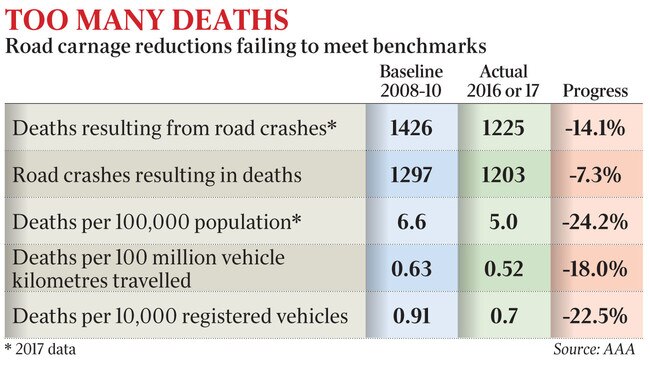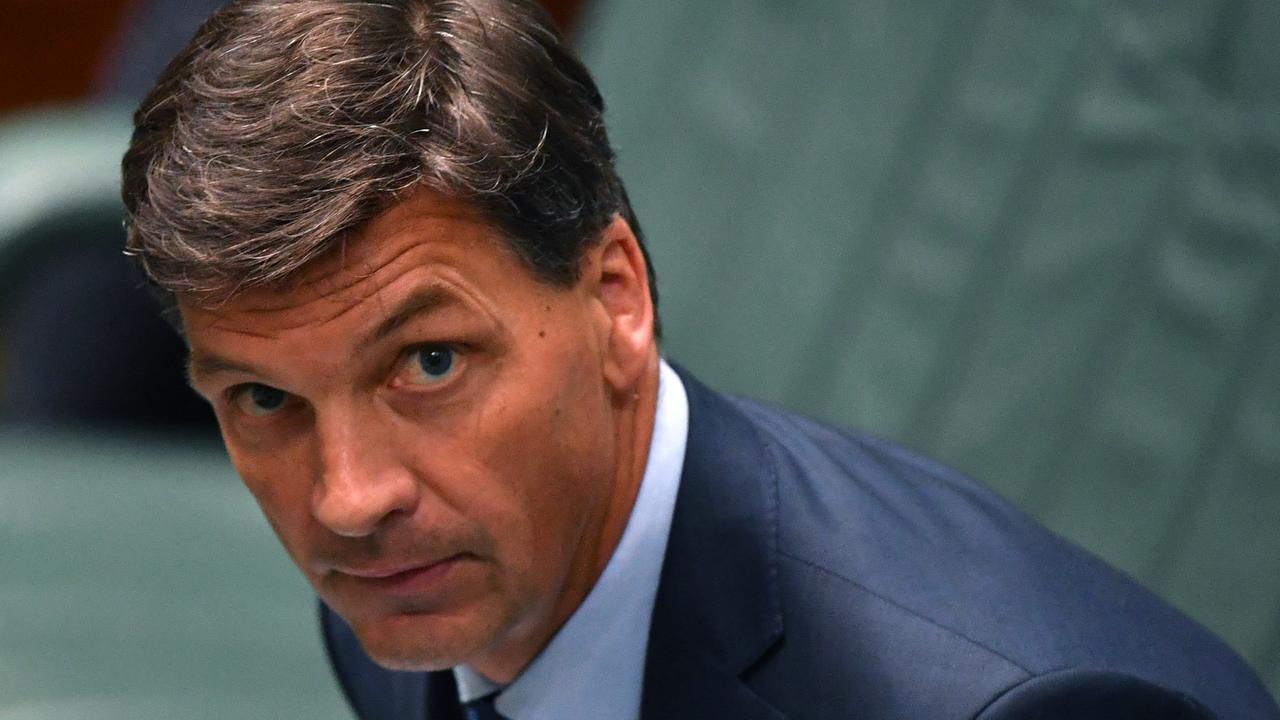AAA links rising road toll to old, unsafe cars
State and federal governments will fail to meet almost 90 per cent of promised road safety improvements.
State and federal governments will fail to meet almost 90 per cent of promised road safety improvements, sparking fresh demands to axe the $5 billion car tariff that has slowed the replacement of older, unsafe vehicles.
A report by peak motoring body AAA shows only four of 33 safety targets agreed by state and federal transport ministers in the 2011-20 national road safety strategy are on track to be met.
The safety strategy promised a 30 per cent reduction in road deaths and serious injuries in car accidents, but the road toll is down by just 14 per cent, and authorities failed to collect data to track improvements in the number of serious injuries.
“This analysis is a damning indictment of those who have been responsible for the strategy’s implementation since 2011, and reflects a disjointed, disorganised approach to road safety in this country,” Australian Automobile Association chief executive Michael Bradley said.
The AAA, representing eight million motorists through state motoring associations, is launching a major road safety campaign this week ahead of the resumption of parliament on Monday.

December was a horror month on Australian roads with 129 fatalities nationally, the worst monthly toll since the year the road safety strategy was signed.
Mr Bradley said the most effective measure the Turnbull government could implement to improve road safety would be the abolition of the $5bn car tariff, which was designed to protect an industry that no longer exists.
“The car tariff is a tax on technology, locking Australians into older, more dangerous cars, and penalising safety technologies being rolled out elsewhere in the world,” he told The Australian.
He cited research showing more than 1300 lives would be saved on Australian roads over the next two decades if Australia reduced the age of its light vehicle fleet by just one year.
The AAA is also calling for the reinstatement of the federal office of road safety, axed by John Howard, to develop and implement national road safety programs.
The national road toll fell to 1225 last year, compared with the strategy’s baseline of 1426. The number of road deaths per 100,000 people fell to five in 2017, compared with the strategy’s 6.6 per 100,000 baseline.
The number of deaths from head-on crashes remained almost unchanged at 268 in 2016 — the latest year for which data was available — compared with the strategy’s baseline of 271.
The number of road deaths involving alcohol fell significantly, exceeding the strategy’s promised 30 per cent cut. However, the number of crashes involving drivers or motorcycle riders with illegal drugs in their system increased by 35 per cent.
Transport Minister Barnaby Joyce’s spokeswoman said the AAA report reflected the difficulties faced by all jurisdictions to meet trauma reduction targets.
She said while the road toll had fallen, there appeared to be “a degree of community complacency over road safety”.
The government had responded by launching an inquiry into improving the national road safety strategy to inform future road safety investments. The minister has also left the door open to a cut in the $5bn tariff, saying the idea “shows merit”.



